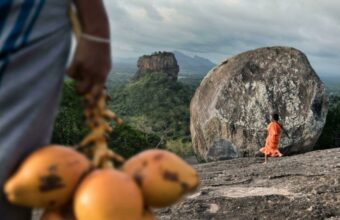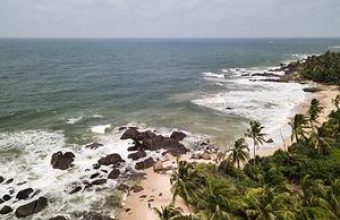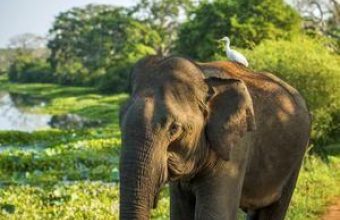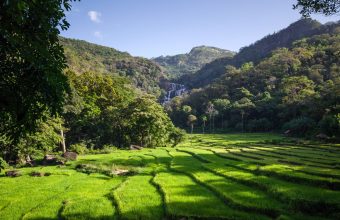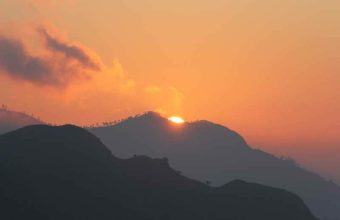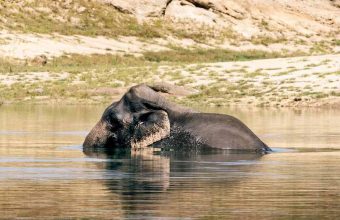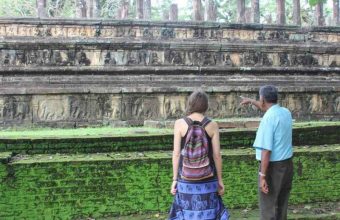Visiting Sri Lanka's Cultural Triangle
How to get to Sri Lanka's Cultural Triangle
Sri Lanka’s Cultural Triangle plots a vaguely triangular expanse between three key historical Sri Lankan centres: the city of Kandy, and the two ancient capitals of Anuradhapura and Polonnaruwa.
Getting here is easy these days too – you can access the Cultural Triangle from Colombo by car in around three hours. A car with a driver is recommended rather than a hire car due to the sometimes poor Sri Lankan driving standards. Public transport offers a more cramped experience and is less reliable. A driver/guide is the ideal solution as then you don’t have to organise a guide or tour on arrival. Tour operators will typically include a private guided tour of the Cultural Triangle as part of their Sri Lanka itineraries.
Here’s our essential guide to visiting Sri Lanka’s Cultural Triangle, and what to see and do once you're there.
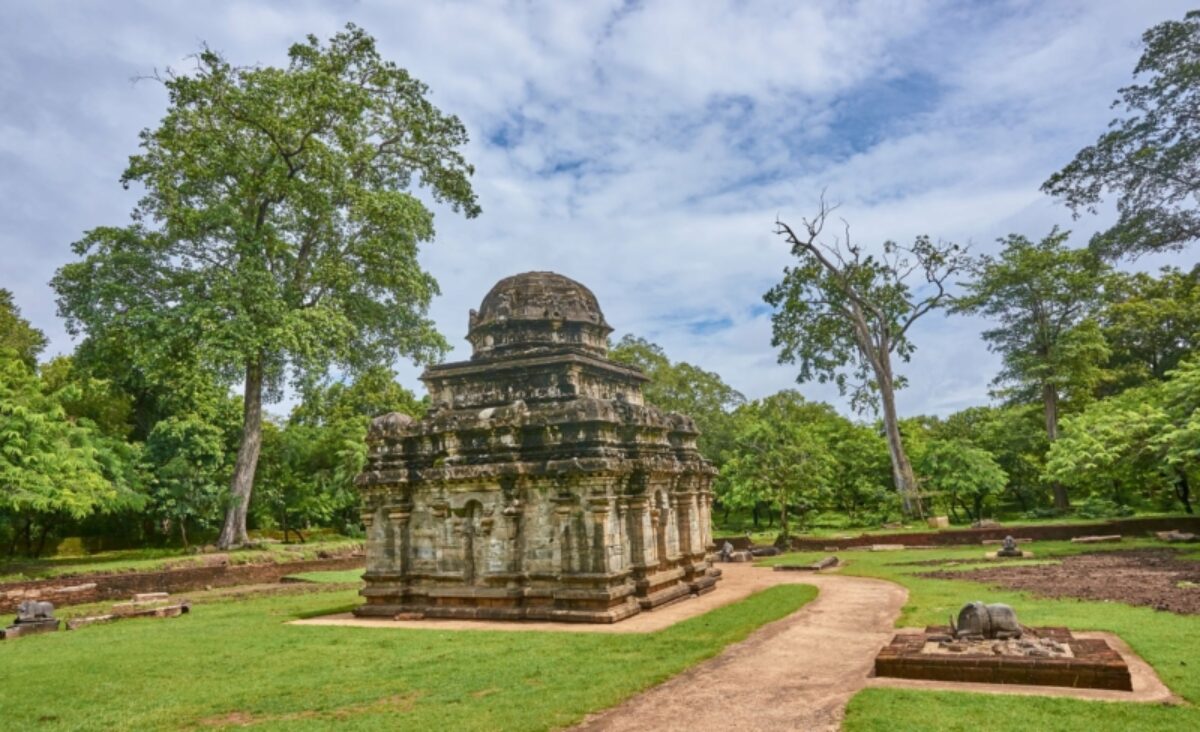
Polonnaruwa, Sri Lanka
Visiting Sri Lanka's cultural triangle
How to get there and what to see
The Cultural Triangle in Sri Lanka’s scenic hinterland is home to the majority of the country’s UNESCO World Heritage attractions and a rich collection of the world’s most important Buddhist sites. These include the ancient Cultural Triangle cities of Anuradhapura, Polonnaruwa and Sigiriya. All are equally worthy of a visit and are relatively easy to travel between.
Then there is the epic ancient city of Kandy. It is part of the Cultural Triangle, but enough of a draw and a hub to be considered on its own. Kandy is the one to visit for those who can only squeeze in one place in the Cultural Triangle and is a good base for making day trips too. If you want to cover all four of Sri Lanka's Cultural Triangle cities, plan for at least a day in each – but preferably more.
The history of the Cultural Triangle
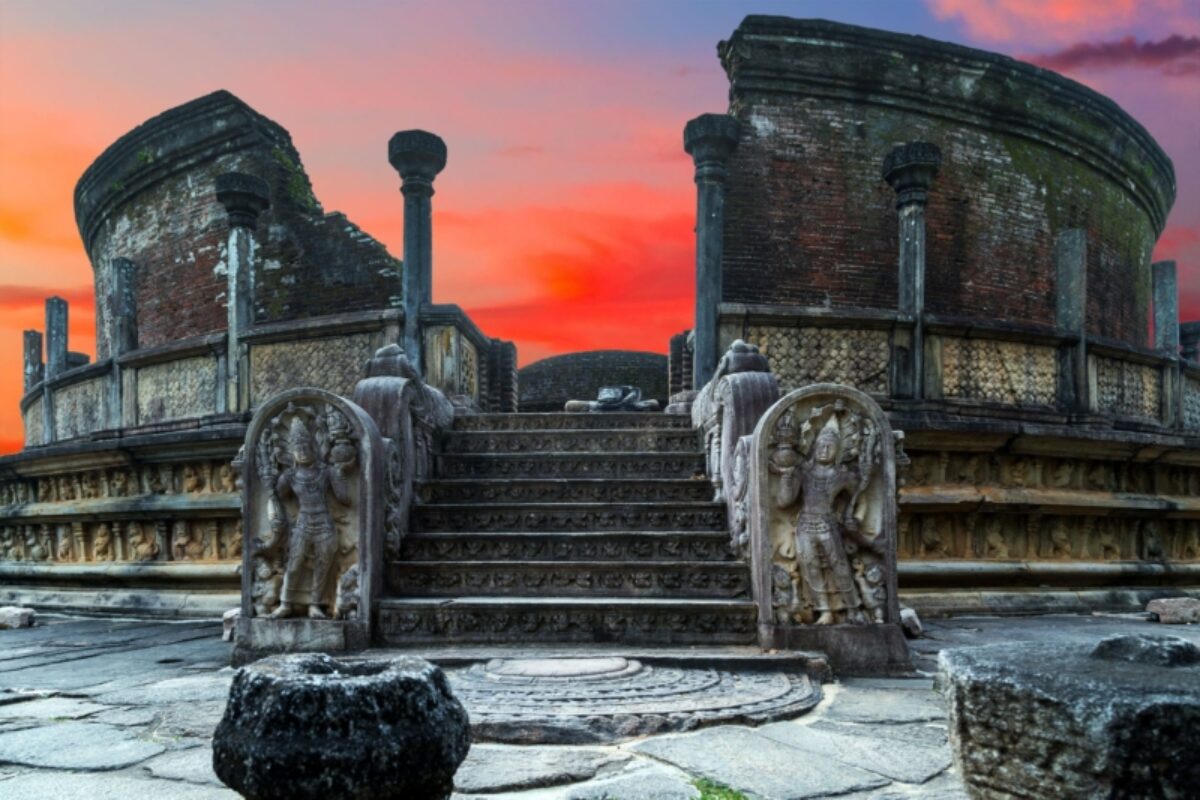
Vatadage at sunset, Polonnaruwa
Sri Lanka is a key Buddhist centre, with evidence of the faith here stretching back well over a millennia. Such is Sri Lanka’s Buddhist history, that some scholars believe it to be the world’s oldest Buddhist country.
The Cultural Triangle cities offer an impressive array of monuments, royal palaces and a sweep of Buddhist temples that were pivotal in the evolution of the Sinhalese civilisation, which has been crucial to Sri Lanka historically and remains predominant in society today. The edges of this triangle are traced out by the trio of historic capitals - the first Sinhalese capital Anuradhapura, Polonnaruwa (which superseded it), and Kandy, the last capital of the Royal kingdom.
There was a time when the Buddhist sites of Sri Lanka's Cultural Triangle cities were mainly the preserve of practising Buddhists. Things have changed over the years with non-Buddhists and tourists now welcomed.
The tumultuous terrorist attacks of Easter Sunday 2019 rocked Sri Lanka to its foundations but did nothing to dent the fact that tourists are still welcome across the swathe of attractions in Sri Lanka’s Cultural Triangle cities. Increased security is noticeable, but doesn’t tend to inconvenience visitors too much, bar longer queues and more thorough security checks, which, of course, help reduce the chance of future attacks.
One key thing to remember is to always take a sarong, or other clothing, to adequately cover up shoulders and legs (exposed midriffs are not welcome either), as many of the Buddhist sites as still in active religious use today and those that are defunct are still venerated. Shoes should be removed before entering temples.
Be wary of visiting temples during periods of puja (worship) as they may be closed to non-Buddhists. However, if you are welcomed by the faithful, these can be a great time to visit with colourful ceremonies often accompanied by drumming and music.
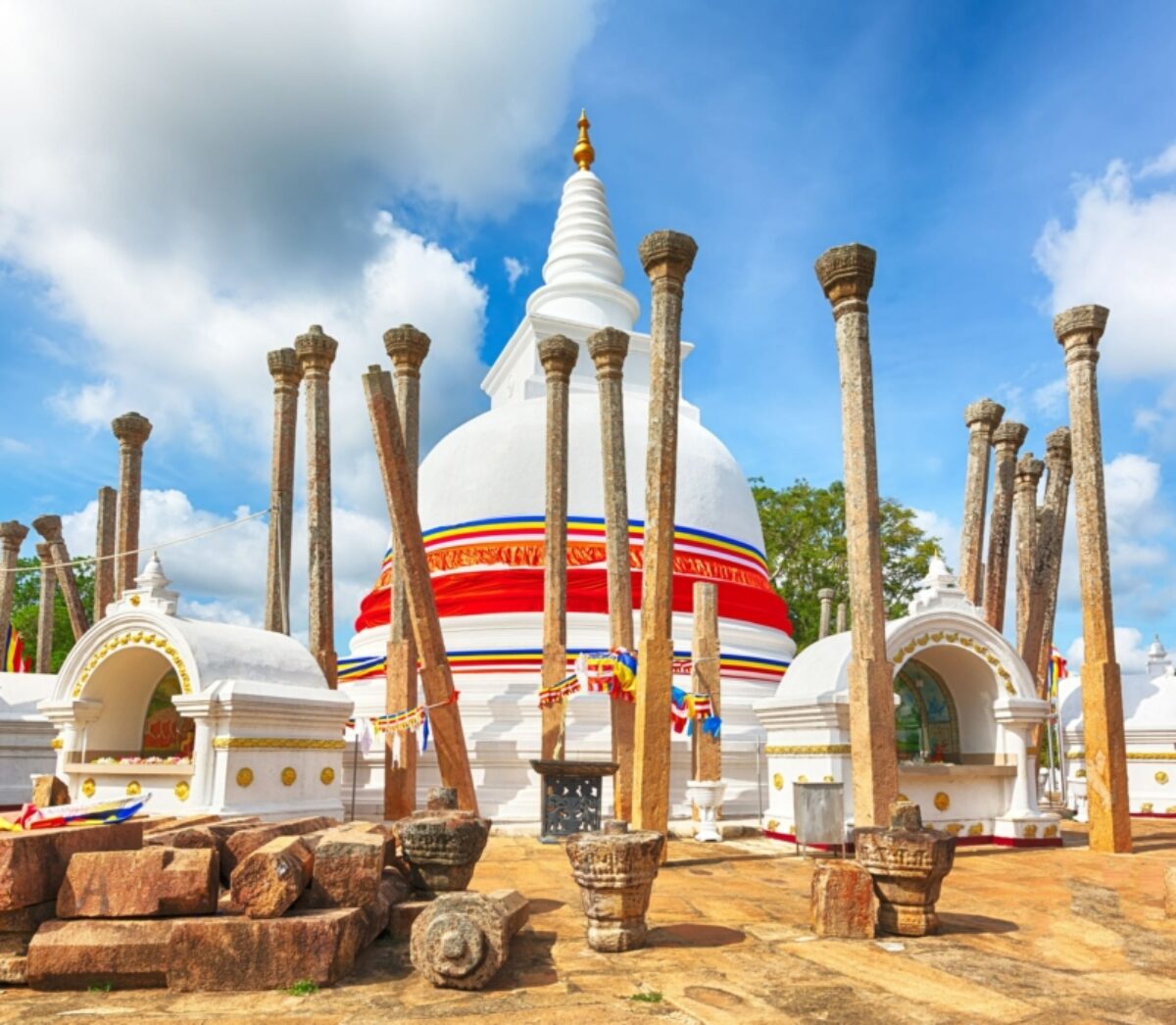
Thuparamaya dagoba, Anuradhapura
Anuradhapura
Anuradhapura is not just one of the oldest cities in Sri Lanka, it’s also one of the oldest continually inhabited cities on earth, founded as far back as 380BC. The first Sri Lankan capital is integral to Sinhalese culture and history, a place where they first tamed nature and came together to live in an urban area. With civilisation came religion and Anuradhapura remains one of the most important Buddhist sites in the country – Buddhists believe Anuradhapura grew up around a branch of the Buddha’s bodhi tree where he received enlightenment.
As with all sights in the Cultural Triangle, it’s worth having a local guide to fill you in on the details and to smooth logistics. The sheer number and scale of Buddhist and historical sites throughout the Cultural Triangle can be a little daunting, so try to narrow down your focus. Handily, many of the key attractions in Anuradhapura are sprinkled around a trio of sites within the Sacred Precinct to the west of the modern city.
Buddha’s sacred bodhi tree is found in Mahavihara, as is the vaulting white Ruvanvelisaya Dagoba (dagoba is the local version of a stupa – dome-shaped Buddhist shrine) and the evocative Lowamahapaya palace ruins. Many visitors don’t even notice Thuparamaya Dagoba, thought to be Sri Lanka’s first dagoba. This is the most ancient part of the old city so it makes sense to start here.
Second is Jetavana, whose voluminous red brick dagoba originally soared over 100m, making it the third tallest monument in the world after a brace of Egyptian pyramids. Allow time to explore the ruins of the monastery complex here, as well as the former Royal Palace. Don’t miss the Jetavanarama Museum too, which dates back to British colonial times. Third is Abhayagiri to the north, another ruined monastery complex whose highlight is the Abhayagiri Dagoba. Parts of this site are still charmingly wild so it’s a great place to indulge your inner explorer.
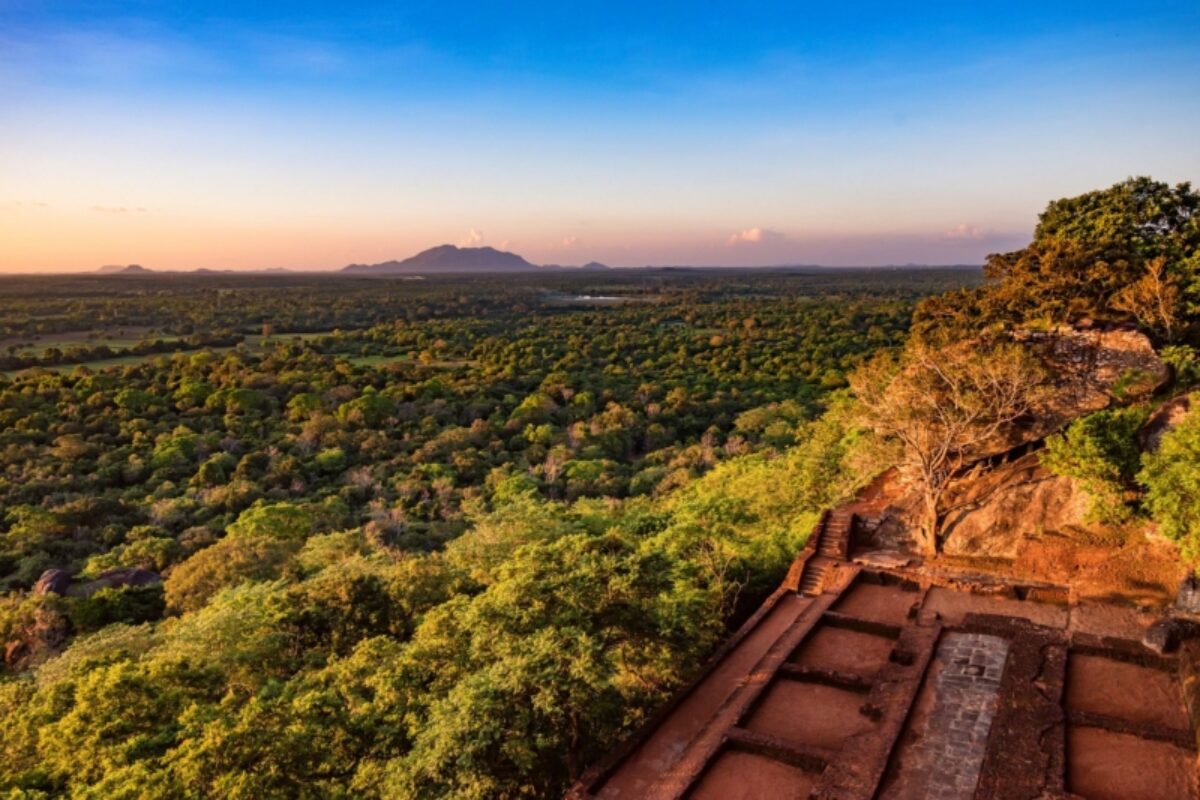
Sigiriya, Sri Lanka
Sigiriya
There is nothing quite like Sri Lanka’s Sigiriya, a vaulting citadel atop a hulking granite rock that soars 200m high and spreads itself over three acres. Also known as the ‘Lion Rock’, after the lions that once thrived here, this Royal citadel is unmissable.
It’s a steep climb up the narrow staircases and walkways to ascend this precipitous site so bring plenty of water and try to time your visit early in the morning or in the later afternoon. Note there is not really much shade on the top either and avoid visiting on a weekend when it gets even busier. En-route make sure to check out the remarkably well-preserved frescoes (note photos are not allowed) and the ‘graffiti’ - some are thought to date as far back as the 7th century.
The effort of ascending Sigiriya (allow at least three hours) is worth it for the views and the ruins on a site first thought to have been populated by Buddhist monks. The main attraction is the footprint of the old Royal Palace. It’s easy to feel the grandeur of the days when King Kashyapa chose to build here back in the 5th century.
To learn more, a visit to the onsite museum is essential. Come before you climb up to Sigiriya. After the summit you can relax in the impressive ancient complex of pools and gardens that sit below as other less fortunate souls swelter above. Take time to check out the Buddhist ruins down here too. You will also find Buddhist inscriptions in the caves.
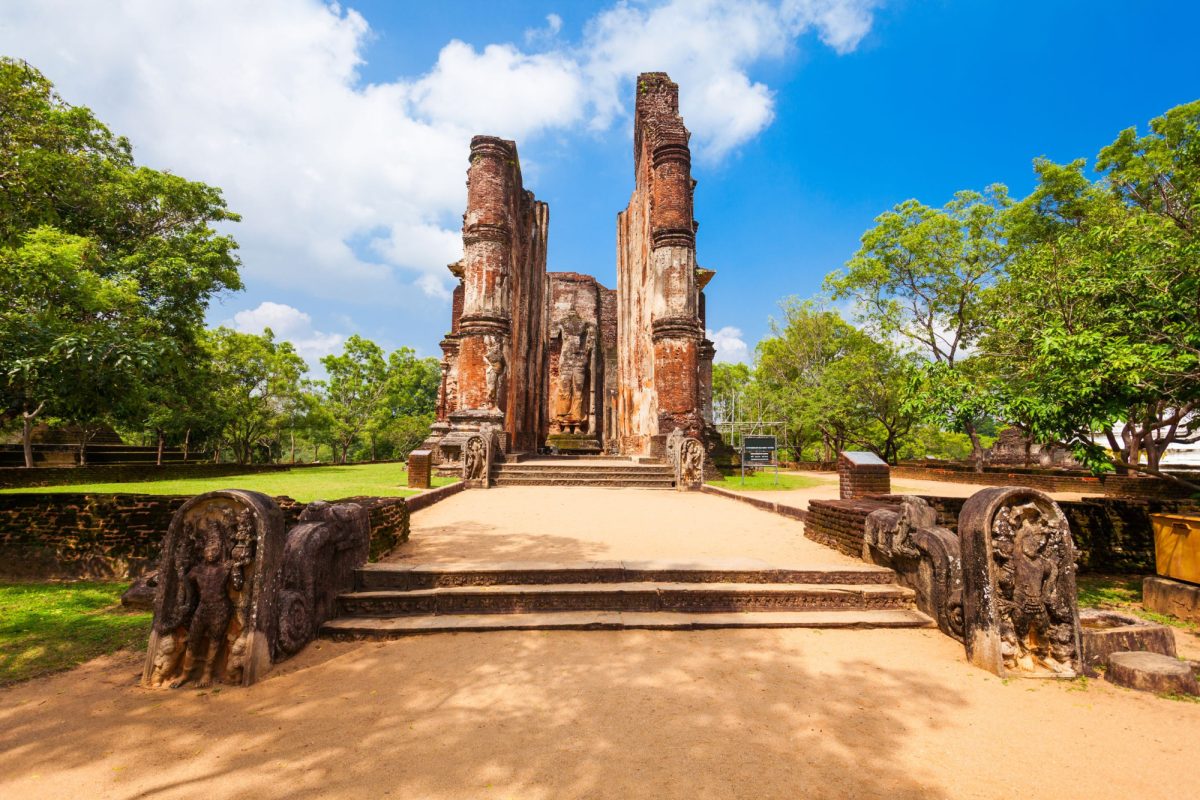
Lankatilaka Temple, Polonnaruwa
Polonnaruwa
Polonnaruwa superseded Anuradhapura as the island’s capital between the 11th and 13th centuries. Handily, it’s a fairly compact site compared to Anuradhapura and is set around the Parakrama Samudra lake. The highlight of the impressively preserved remains is the Royal Palace complex, which sits within the restored walls of the central Citadel. Look for the well-preserved Audience Hall’s stone-carved elephants and lions guarding the entrance.
To the north is Alahana Pirivena (the Monastery of the Cremation Grounds), home to the remarkable Lankatilaka Temple, whose walls soar 17m tall and 4m wide, where you will also find an 18m high statue of Buddha – although time and disrepair has rendered it headless.
Look for the Buddha granite rock carvings of Gal Vihara, consisting of four separate images. The standing Buddha is considered the best of the four, with its unusual crossed arms and solemn face leading devotees to suggest it is an image of Buddha’s disciple Ananda, grieving for his master.
You can explore the Cultural Triangle city Polonnaruwa by car or noisy, uncomfortable tuk-tuk, but a bike is a more eco-friendly way to get around. Biking also gives you a better feel for the ancient city’s scale and layout.
Sigiriya is only an hour’s drive from Polonnaruwa and is much better set up for staying over, so consider it as an alternative base instead. Make sure to look out for the endemic toque macaques.
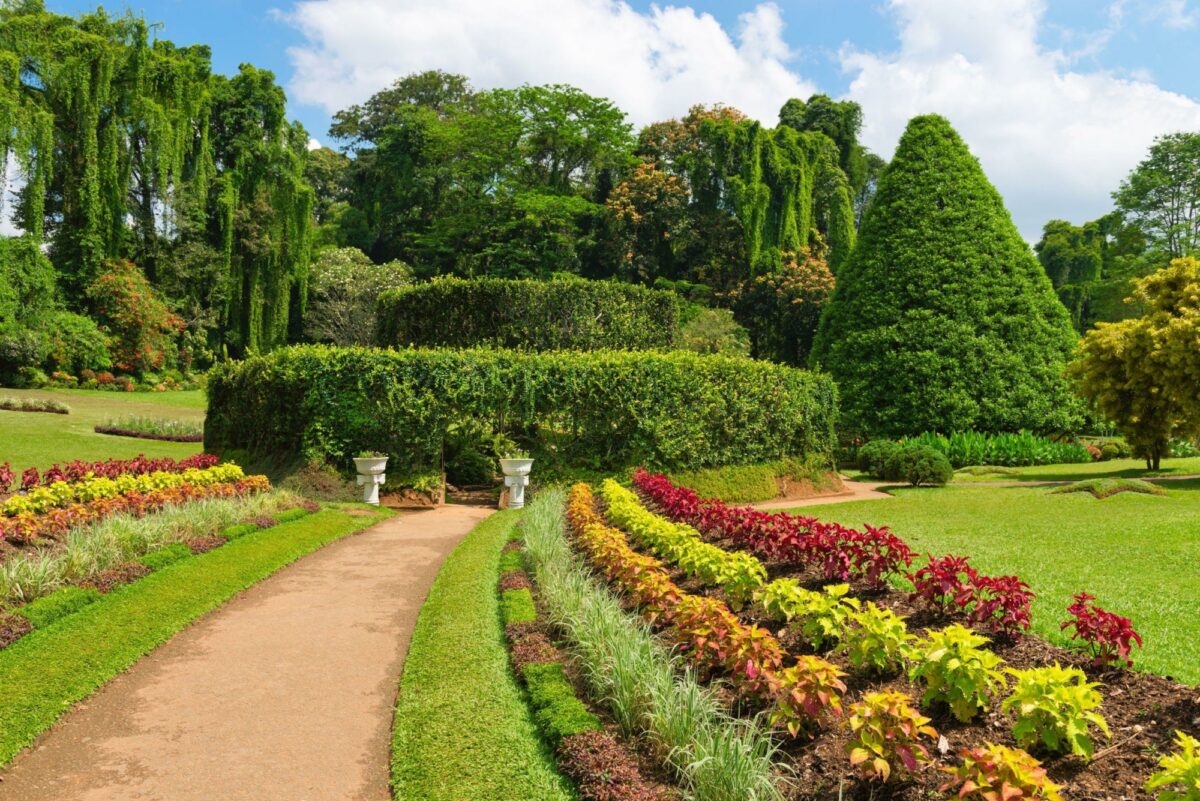
Royal Botanical Gardens, Kandy
Kandy
Kandy – the last capital of the Sri Lankan kings – is the stand out attraction in Sri Lanka’s Cultural Triangle, lying on its southern fringes amidst a rich cloak of emerald green forest. The country’s second-largest city serves as Sri Lanka’s unofficial cultural capital. It’s a charming oasis set in the country’s Hill Country, which reclines around the sculpted Kiri Muhuda lake, and has a spirit and passion quite unlike Colombo.
Kandy is an excellent base for exploring the Cultural Triangle as it has good road and rail connections, plus a multitude of cafes, bars and restaurants. One mistake visitors often make is spending too little time here before heading off to the surrounding sites in the rest of the Cultural Triangle. It’s an enjoyable city for just strolling around and makes for a rewarding couple of days at the beginning or end of a Cultural Triangle adventure. A major attraction is Kandy’s contrasting architecture, with crowded markets rubbing shoulders with grand colonial buildings and gold-shrouded Buddhist temples.
Kandy’s fierce sense of pride was part of the reason it became the last Buddhist bolthole, resisting Portuguese and Dutch forces in turn for three centuries before finally succumbing to the British in 1815. It’s no mere stark historical site either – consider timing your visit to coincide with one of the lively cultural events that bring life to the streets throughout the year.
The highlight is the 10-day Esala Perahera (Festival of the Tooth), which is normally held in late July into early August. The festival has its roots back to the arrival in Sri Lanka of Kandy’s sacred tooth back in the 4th century AD.
The Kandy area played a key role in the ferment of political and religious pressure that built in the run-up to the terrorist attacks of 2019. Steer clear of political and religious conversations here, even if you think you know the other person’s viewpoint, as unintentional offence can easily be caused.
A word of caution on touts and street hassles too. This is arguably the worst place in Sri Lanka for this menace, but it’s not usually threatening. A few local words usually see off touts but employing a guide is even more effective.
Temple of the Sacred Tooth
Kandy's one attraction is the golden topped Temple of the Sacred Tooth, home to Buddha’s Tooth, which was brought to Sri Lanka back in the 16th century. It’s very much an active temple so make sure to check ahead in case it is closed for a ceremony or event.
The landmark temple lies at the heart of Kandy and is also known as Sri Dalada Maligawa. Architecturally it’s an eye-catching collage of slick marble, stark ivory and solid hardwoods, with plenty of gold woven in too. Buddha's Tooth (Sri Lanka’s most famous Buddhist relic) now stands as the fulcrum of the two-storey high shrine topped by a golden canopy. Today it is a place of pilgrimage for Buddhists from all over the world with daily worship and ceremonies, backed up by lavish special events.
Note you’ll be disappointed if you were hoping to actually see the tooth itself as it is hidden safely from public view in a gold casket. The site is well worth visiting, though, for its drama and Buddhist architecture. There are also a sprinkling of further temples dotted around the complex, as well as museums. It’s worth taking on the services of a guide to help you navigate the site efficiently, with guides available on the day.
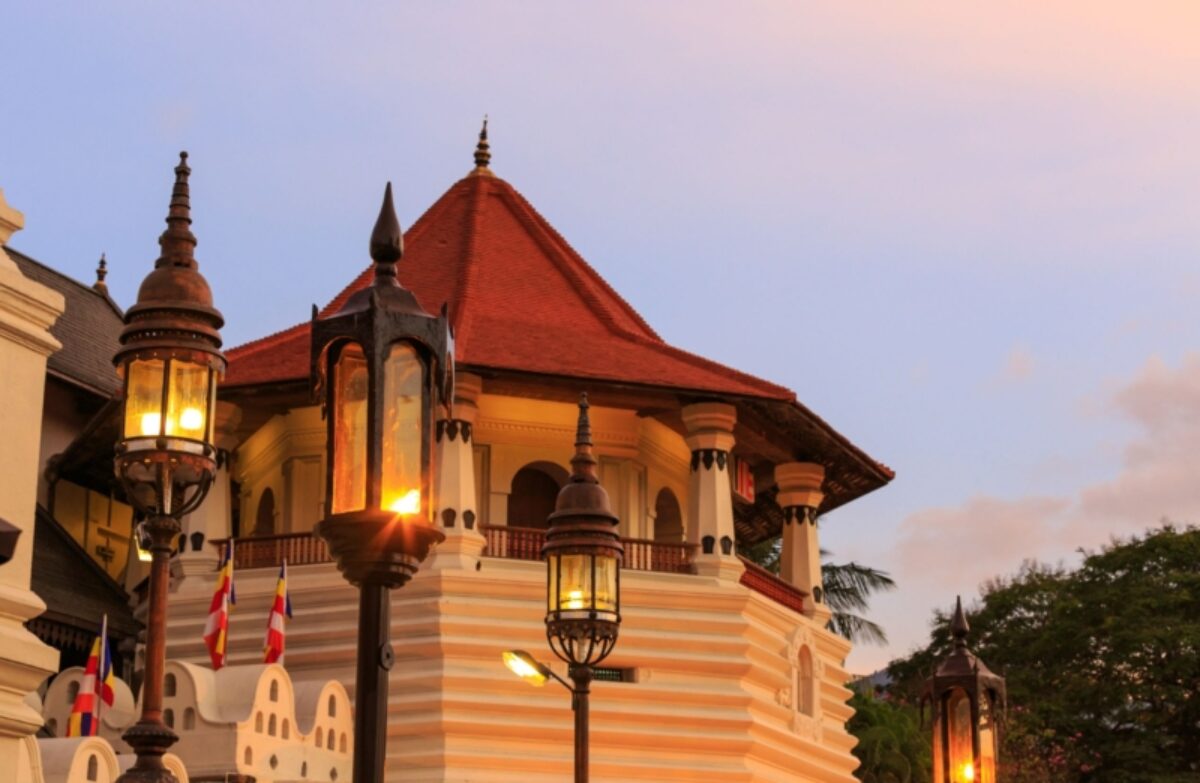
Temple of the Sacred Tooth in Kandy
Don’t miss the vast Alut Maligawa shrine hall (built in 1956 to mark the 2,500th anniversary of Buddha’s death), with its array of Thai-style sitting Buddhas, and the Sri Dalada Museum. The latter houses many of the gifts given by various world leaders to the temple and also features information on the damage caused by the 1998 bombing. It also, of course, tells you everything and anything you could want to know about what is surely the world’s most celebrated tooth.
Other must-visit sights in Kandy include the Royal Palace. It houses the National Museum of Kandy, which features over 5,000 exhibits, many tying into Buddhism in the country. It was the last Royal Palace to be built on the island. Then there is the green lung of the Royal Palace Park and the even more impressive Royal Botanical Gardens, Peradeniya, which lies a little out of Kandy, but is worth the journey to.
Also worth heading out of Kandy for are a brace of key Buddhist sites – Lankatilaka Temple and the Gadaladeniya Temple. Further Buddhist attractions include the Malwatta Monastery, one of the most heralded in the country.
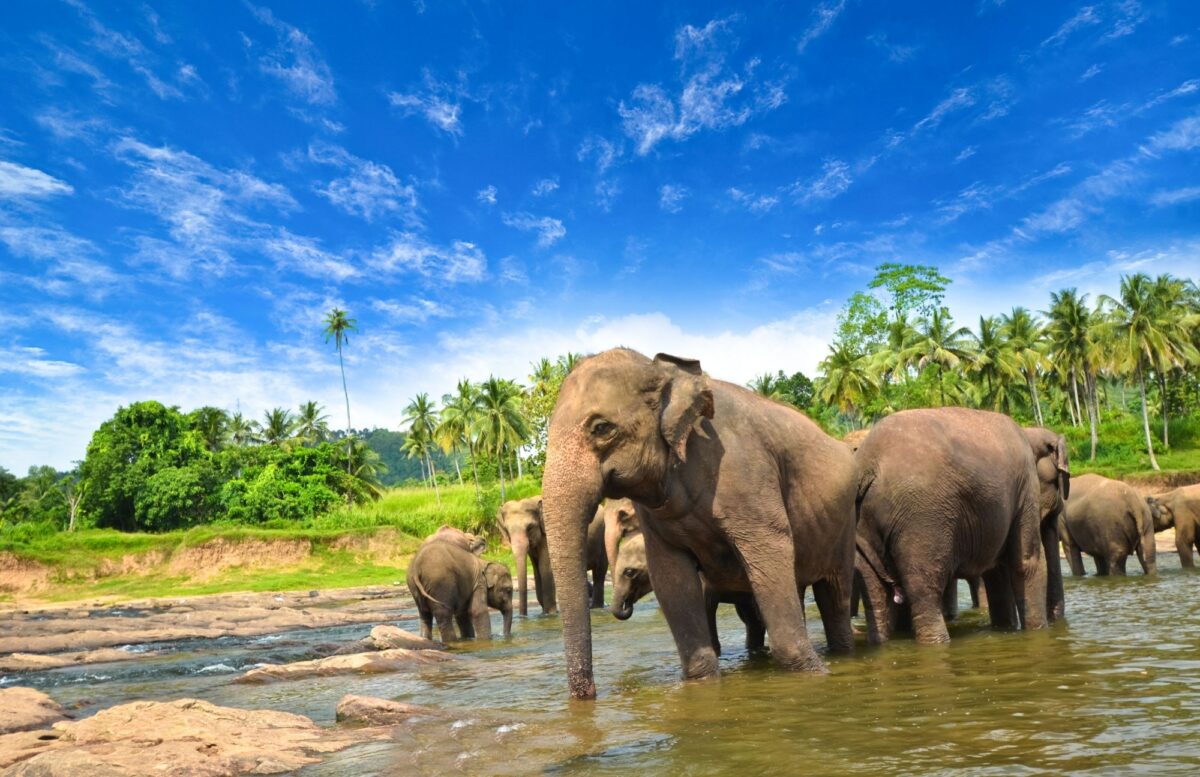
Elephants near Kandy
Lesser-known sites in the Cultural Triangle
There is plenty to see beyond the ancient cities of the Cultural Triangle. There is the cave temple of Aluvihare, the rock-hewn standing Buddha statue at Avukana, the Buddhist centre of Mihintale, the mysterious forest monastery in Ritigala, the long-abandoned citadel of Yapahuwa, and then Dambulla Cave Temple, the island’s largest cave complex, which soars 160m above the plains in the Matale District. The danger is trying to do too much and not really getting a real flavour for the Cultural Triangle so choose wisely. Less is usually more in this beguiling corner of the world.
Beyond Buddhist sites, the Cultural Triangle is also home to a brace of superb national parks. The chief attraction in the Minneriya and Kaudulla National Parks are the large elephant populations that peak through during the rainy reason between June and September. So impressive are the numbers and the spectacle, that locals talk of ‘The Gathering’, which sees Asia’s largest concentration of elephants.

